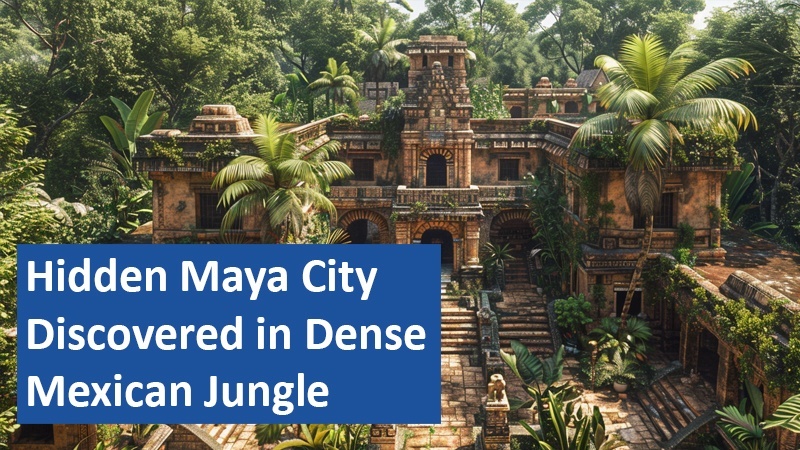Using advanced scanning technology, researchers have located a major Maya site in the thick jungle of Mexico’s Yucatán Peninsula. This newly identified settlement is believed to have been a political center. Stretching over several square miles, the discovery sheds new light on Maya civilization’s complex urban development.
By August Roberts
Advanced Scans Reveal Hidden Ruins

Researchers from Tulane University in Louisiana uncovered the site using high-tech laser scanning. They analyzed existing aerial lidar scans to map structures concealed under the jungle canopy in Campeche, Mexico. This study revealed an estimated 6,764 structures, previously unknown, indicating a vast Maya city that could have served as a central hub. These findings, recently published in the journal Antiquity, underscore the Maya civilization’s extensive reach in the region.
Exploring Valeriana’s Urban Landscape
The archaeological team examined three main areas near the renowned Maya site Calakmul, focusing particularly on one densely populated zone. This area, covering roughly 6.5 square miles, includes structures indicating a well-developed city that the researchers named Valeriana, after a nearby freshwater lagoon. Valeriana appears to have contained ceremonial spaces, residential complexes, and sports facilities, hinting at its role as a vibrant urban center. The site’s strategic location and size suggest its importance in regional politics and culture.
The Hallmarks of a Capital City
The study highlights architectural features suggesting that Valeriana might have functioned as a political capital in the Maya Classic Period (200–950 AD). Two main complexes were discovered, located two miles apart and connected by an inhabited area. A broad roadway, amphitheaters, and water reservoirs illustrate the site’s advanced infrastructure. Such features underscore the Maya’s skill in urban planning and resource management, essential in the dense jungle environment of southeastern Mexico.
A Complex Civilization with Uncertain Decline
The Maya civilization, spanning modern-day Mexico, Guatemala, Belize, Honduras, and El Salvador, was renowned for its intricate writing system, precise calendar, and advanced astronomy. Although the Maya thrived for centuries, their cities experienced rapid abandonment in the 8th and 9th centuries, a phenomenon still debated by researchers. Possible factors include climate change, resource depletion, or social unrest, though no single cause has been conclusively determined.
This remarkable discovery invites us to reflect on the sophisticated culture that thrived within the jungle for centuries.
Based on information from www.zeit.de and own research.